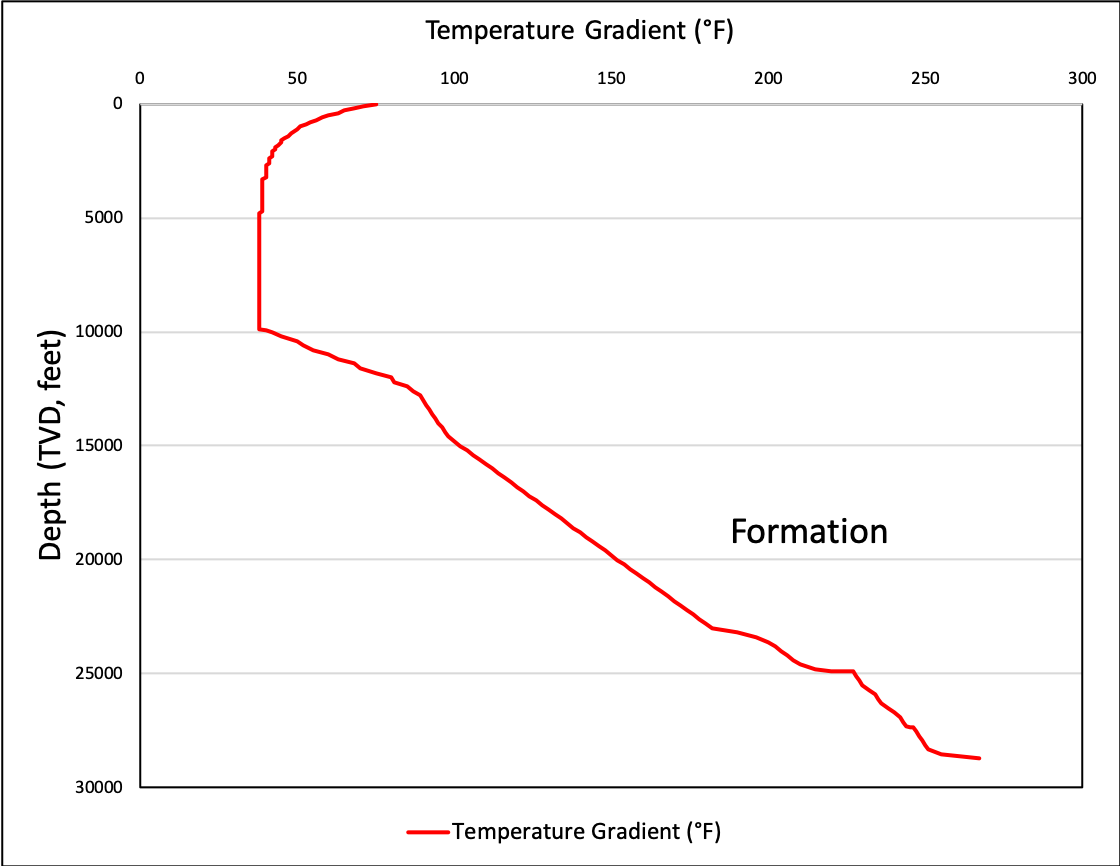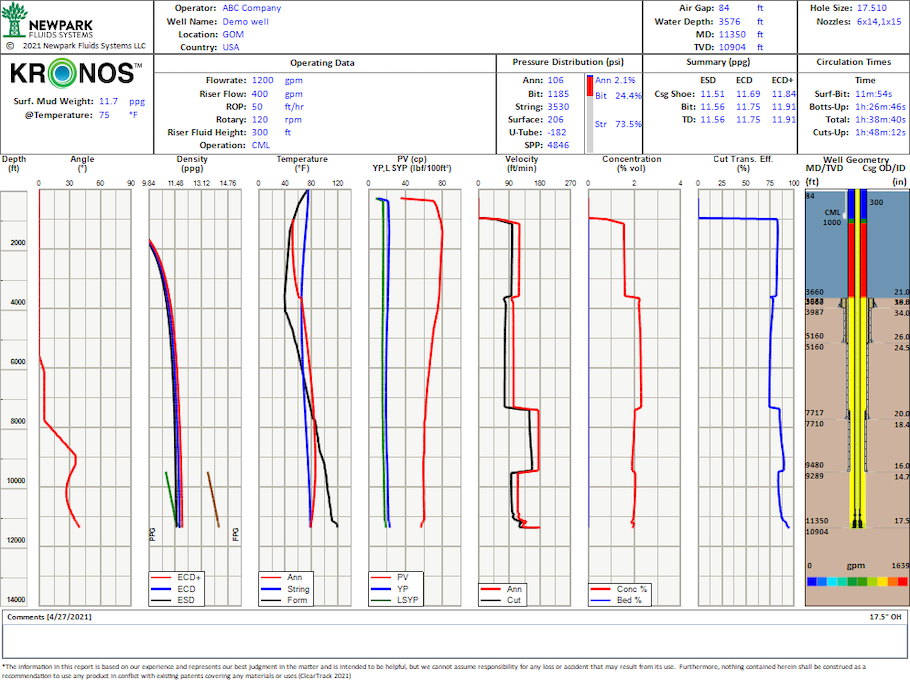Presented by:

Editor's note: This article appears in the new E&P newsletter. Subscribe to the newsletter here.
Newpark Fluids Systems has always been one of the pioneers at the forefront of the use of advanced drilling and reservoir fluids. New challenges are constantly arising, especially in deepwater and ultradeepwater environments like the Gulf of Mexico (GoM).
The attributes of many of these deepwater wells include drilling in water depths ranging anywhere from 1,000 ft to more than 9,000 ft. In addition to the challenges posed by the depths themselves, recognizing temperature differential between the seafloor and the bottom of the well, narrow pressure windows, and the importance of logistics are all paramount to successful and safe operations.
With deepwater and ultradeepwater operations becoming more prevalent, the complexity of the operations become more demanding, and the solutions to these challenges require an integrated approach not only to the supply chain, but to the fluids themselves.
Identifying the challenges
Between the temperature differential from the deepwater seafloor to the bit and the narrow fracture gradient window caused by reduced overburden or depleted reservoirs, utilizing a deepwater drilling fluid with optimized rheological properties was one of the clear solutions to the challenge.
The temperature at the seafloor can be as cold as 32 F to 40 F (0 C to 4 C), while bottomhole temperatures in deepwater environments average about 250 F to 300 F (120 C to 150 C).

A deepwater drilling fluid needs to have sufficient low-end rheologies (6 rpm and 3 rpm dial readings) to provide hole cleaning as well as barite (weight material) suspension at high bottomhole temperatures near the bit. In addition, it must have a sufficiently low gel strength to break to resume circulation in the cold temperature environment of the riser near the seafloor.
One other consideration, a thinner fluid reduces pressure losses and optimizes flow rates allowing increased ROPs, faster tripping and reduced spike in equivalent circulating density (ECD).
Operations on this specific ultradeepwater campaign in the western GoM were conducted from an ultradeepwater, dual-activity drillship and in water depths in excess of 2,600 m (8,530 ft).
As a solution to the aforementioned challenges, Newpark's engineers chose to use a newly developed, low ECD, flat-rheology SBF designed for narrow margin drilling applications. This newly developed chemistry included the targeted use of a low-dose, high-performance organo-clay.
Newpark’s Kronos synthetic-based drilling fluid system builds on decades of experience with the CyberDrill fluid system. It is a versatile flat-rheology and low-ECD deepwater drilling fluid that was designed using a unique set of products specifically created for the challenging environments that deepwater operators routinely face.
The Kronos flat-rheology formulation provides a consistent rheological profile over a wide range of temperatures and pressures. Its low-temperature gel structures reduce pressure spikes, thereby stabilizing ECD and reducing losses due to induced fracturing.
The low-end rheologies provide efficient hole cleaning and barite suspension. The Kronos low-ECD formulation was designed specifically to reduce the ECD spikes magnitude through the minimization of pressure losses and the optimization of flow rates.

As was proven in the field on this GoM project, these characteristics were achieved at any given fluid density by lowering the overall rheological characteristics of the fluid while minimizing sag potential. In addition, they were stable over a wide range of temperatures and pressures.
Operational efficiencies derived from use of this fluid included ECD management, hole cleaning performance, reduction in downhole losses, increased ROP and the elimination of nonproductive time.
Additionally, the tactical use of this newly developed high-performance water-based mud to reduce operational steps on short hole intervals was successfully employed. Operations in this campaign employed open-hole, gravel-pack completions, with the reservoir asset drilled with non-damaging reservoir drill-in fluids.
Timely supply and delivery of drilling and completion fluid solutions are integral elements of GoM ultradeepwater supply, logistics and distribution programs. The geographic expanse of the GoM is roughly 1,500 km (930 miles), which presents significant challenges in terms of distribution and logistics required to supply ultradeepwater operations, particularly in the western GoM.
Operational efficiencies in deepwater are generally improved when leveraging the distribution and logistical benefits of best-in class facilities. In this case, supply chain activities supporting the campaign were conducted from fully automated, modern, next-generation offshore supply bases near one another in Port Fourchon, La.
Some of the key features of these facilities included working capacity, mixing of specialized fluids, automated workflows, HSE designs, transfer of fluids at high flow rates and the ability to simultaneously mix, load and transfer fluids to multiple supply vessels.
RELATED ARTICLE:
Fluid Conditioner, HPDE Cut Lubricant Costs, Improve ROP
This Newpark Drilling Fluids article originally appeared in E&P magazine's February 2016 issue. It details how an operator in the Bakken, using a fluid conditioner and applying HPDE through a steady stream, experienced reduced motor wear and used only one bit to drill a 3,201-m Three Forks lateral.
Recommended Reading
Range Resources Holds Production Steady in 1Q 2024
2024-04-24 - NGLs are providing a boost for Range Resources as the company waits for natural gas demand to rebound.
Hess Midstream Increases Class A Distribution
2024-04-24 - Hess Midstream has increased its quarterly distribution per Class A share by approximately 45% since the first quarter of 2021.
Baker Hughes Awarded Saudi Pipeline Technology Contract
2024-04-23 - Baker Hughes will supply centrifugal compressors for Saudi Arabia’s new pipeline system, which aims to increase gas distribution across the kingdom and reduce carbon emissions
PrairieSky Adds $6.4MM in Mannville Royalty Interests, Reduces Debt
2024-04-23 - PrairieSky Royalty said the acquisition was funded with excess earnings from the CA$83 million (US$60.75 million) generated from operations.
Equitrans Midstream Announces Quarterly Dividends
2024-04-23 - Equitrans' dividends will be paid on May 15 to all applicable ETRN shareholders of record at the close of business on May 7.





